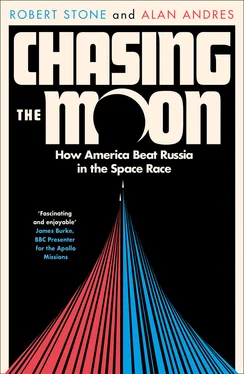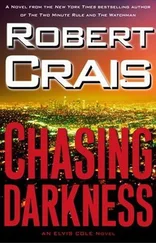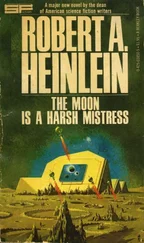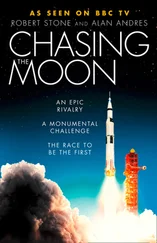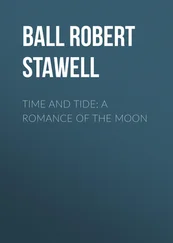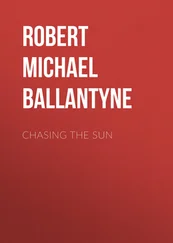1 ...6 7 8 10 11 12 ...24 News about the society’s rocket ship spread internationally. In the United States, Time magazine reported on the controversy, and English-language newspapers as far away as India included it in their world-news summary. The society’s journal noted with pride that one account “stole half the photo-news page of a national Sunday newspaper from Herr Hitler.” During the flurry of publicity surrounding their moon rocket, Clarke and Bill Temple met one foreign-language journalist who made an enduring impression. Early in the interview, Temple began to wonder whether the tall quiet-voiced German might be a Nazi spy, especially when he showed particular interest in their collection of clippings about rockets as weapons. Clarke and Temple agreed that in this instance it was probably wise to avoid impressing their visitor with their knowledge of astronautics. Instead, they pretended to be merely a couple of harmless science-fiction fanboys.
The best-informed members in both the American and British rocket societies continued to assume that all rocket-related research and development in Germany had come to an abrupt end following the rise of the Nazis. Living in the United States, Willy Ley had heard nothing from his homeland to make him believe otherwise. The Third Reich appeared more concerned with rearming its land army and rebuilding its air force than with funding scientific rocket research, which few believed had any practical application as a weapon of war. Ley logically assumed that transporting a small explosive payload via a rocket would be a waste of money, and he was certain that other military strategists would agree. Meanwhile, he hoped he might eventually find a full-time position with an American company interested in developing rockets for scientific purposes. He continued to advocate for space travel, writing articles on a variety of scientific subjects for popular magazines in the hope that an informed public in the United States would avoid being seduced by the pseudoscientific and mystical fads that had become popular in Germany recently.
While on a trip to Los Angeles, Ley was delighted to reestablish contact with Frau im Mond’s creator. Fritz Lang’s sudden departure from Germany had come shortly after Hitler’s propaganda minister, Joseph Goebbels, banned his latest film, in which Lang had put the words of the Nazis in the mouth of an evil criminal mastermind. Lang was now working for MGM, where he had directed his first American film, Fury, starring Spencer Tracy and Sylvia Sidney. It was a provocative thriller that addressed the scourge of lynchings in the United States, though told through the eyes of an innocently accused white man. In it, Lang depicted American vigilante mob justice with visual comparisons to what he had witnessed in Nazi Germany.
Sitting on a veranda under a starry California sky, Lang and Ley discussed the impending war in Europe and mused about travel to the Moon and the planets. However, if they had wanted to revisit their earlier cinematic collaboration, finding a copy of Frau im Mond would have been impossible. Hitler’s Gestapo had confiscated every exhibition print a few years earlier. The film had disappeared.
Not long after the Third Reich’s invasion of Poland in September 1939, Britain entered the war against Germany, forcing Clarke and Bill Temple to vacate their Bloomsbury flat and shut down the British Interplanetary Society’s headquarters. Should the British forces in Western Europe fail to prevent France from falling, Germany’s Luftwaffe bombers were expected to appear in the skies over the heart of London within days. Londoners with the opportunity to do so sought out alternative lodging with friends and relatives in the city’s less vulnerable outskirts or moved to the countryside. When Clarke and Temple locked their door, they left behind Clarke’s almost-complete run of American science-fiction magazines, a collection numbering in the hundreds that had taken him nearly a decade to assemble. He would never see them again.
The worst of the Blitz didn’t come to London until the fall of 1940, when the city was bombed continuously for nearly two months. Arthur Clarke saw none of it; now working for the Ministry of Food, he had been relocated to a seaside resort in North Wales. Sometime in the early spring of the next year, their Bloomsbury flat took a direct hit, destroying everything except the outside walls.
CLARKE SPENT THE early months of the war processing paperwork that documented the precise location of each ton of imported British tea. His position in the civil service gave him a temporary deferment from military conscription, but by the end of the year, service in one of the armed forces was unavoidable. He joined the RAF in the hope that he might be able to acquire a valuable education in the fundamentals of celestial navigation, but instead he was assigned to a technical unit devoted to a new utilization of radar to assist aircraft during poor-visibility landings. It was Clarke’s first opportunity to collaborate with another group of trained scientists, a team from the Massachusetts Institute of Technology that had worked on the invention’s development.
Corporal Clarke was then assigned to an RAF training center in Wiltshire, not far from Stonehenge, where he taught night classes on the fundamentals of radar. However, the subject of the corporal’s classroom lectures frequently turned to astronautics, prompting his students to nickname him “Spaceship Clarke.” During a lecture a student might mischievously ask the instructor how a rocket functions in space, setting off a long discussion about multi-stage rockets and reaching the Moon, complete with diagrams and basic calculations. During his off hours he wrote technical articles for journals such as Electronic Engineering. His career as a published science-fiction author was yet to come, though just prior to joining the RAF he had completed the preliminary draft of his first novel, Against the Fall of Night.
As the Allied forces closed in on Germany in late 1944, Clarke and a group of the most active members of the British Interplanetary Society met in a London restaurant one evening. Val Cleaver, a society officer who worked in British aviation, told the diners details about his recent business trip to the United States. While visiting New York, Cleaver had met with Willy Ley and discussed recent reports of a large German rocket weapon that was said to have hit targets in Antwerp and London. Ley had heard reports that it was a frightening and more sophisticated successor to the V-1, a low-flying cruise missile that had appeared in the skies of southern England that summer, sometimes arriving in waves of more than one hundred missiles a day. Ley dismissed the jet-powered V-1 as a crude and inaccurate weapon of little military value, assuring his British guest that the reports of a bigger, high-altitude rocket bomb were nothing more than desperate Nazi propaganda. Cleaver, who had already seen classified U.K. military-intelligence reports detailing the existence of the big rocket, cautioned his friend, “If I were you, I wouldn’t be quite so sure.”
Laughter was heard around the dinner table after Cleaver recalled his words of caution. But no sooner had the amusement subsided than the gathering was interrupted by the sound of a huge crash outside the restaurant. “The building shook slightly,” Clarke recalled. “We heard that curious, unmistakable rumble of an explosion climbing backwards up the sky, from an object that had arrived faster than the sound of its own passage.” The abrupt intrusion had been the British Interplanetary Society’s introduction to the deadly V-2 rocket, the world’s first operational ballistic missile.
Should Ley have needed any further persuasion about Germany’s new rocket weapon, a copy of Life magazine published a few weeks later would have been sufficient. A double-page spread provided a detailed and fairly accurate cutaway diagram of the V-2 and a graphic illustration presenting its trajectory from launch to impact. Life also reproduced military photographs that pictured recovered rocket engines. It described the V-2 as a “spectacular weapon” but judged it “a military flop.” Despite its impressive engineering, the new weapon was an ineffective boondoggle. As Ley had predicted, the V-2’s destructive power was limited by its small payload capacity. In fact, fewer military and civilian casualties resulted from V-2 attacks than the total number of slave laborers killed due to the harsh conditions surrounding the weapons’ assembly. But decisively, when the German high command chose to fund the V-2 by diverting funding earmarked for fighter-jet aircraft, they ceded the airspace to Allied bombers, thus hastening their own defeat.
Читать дальше
